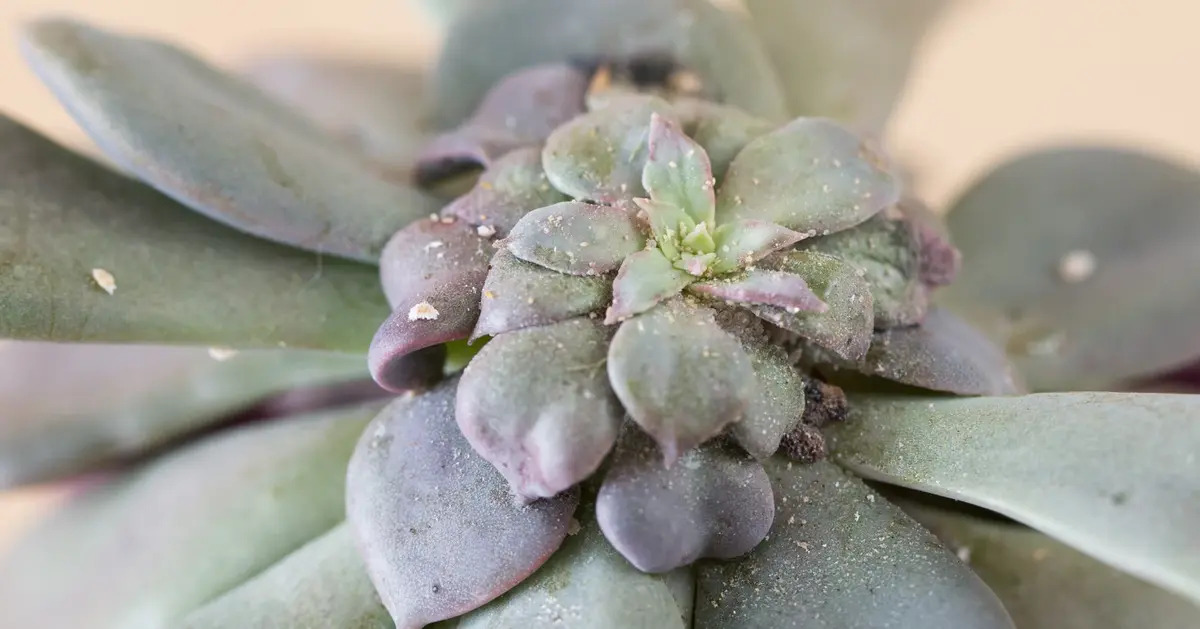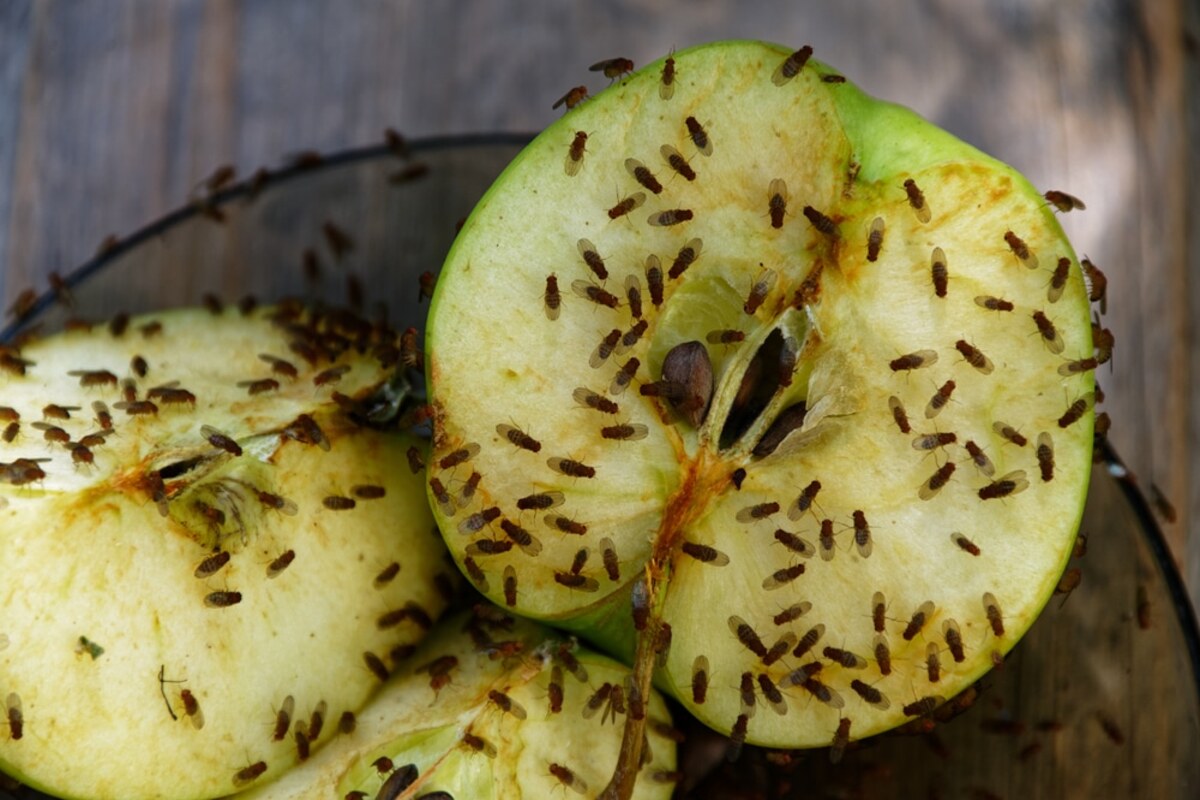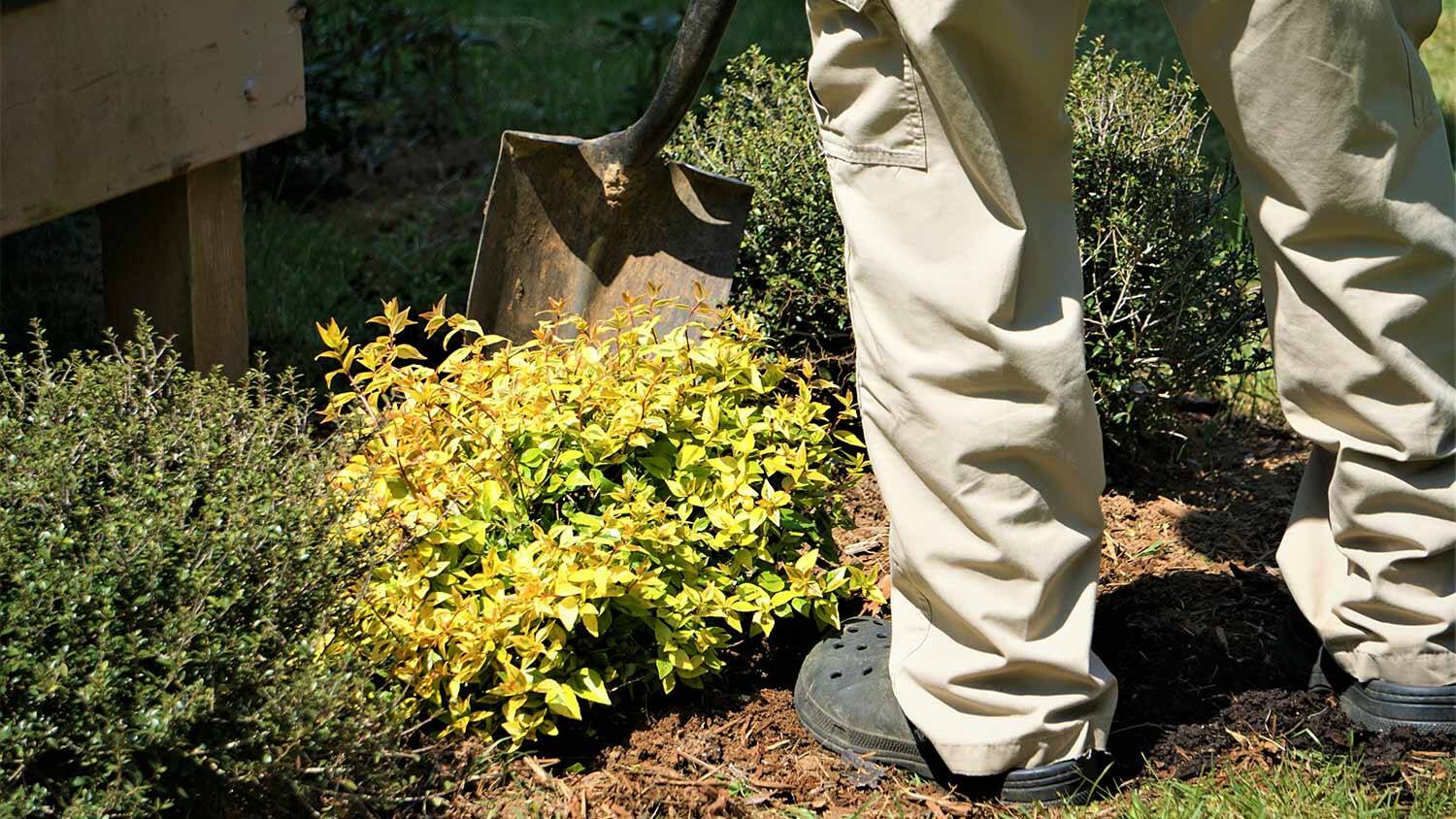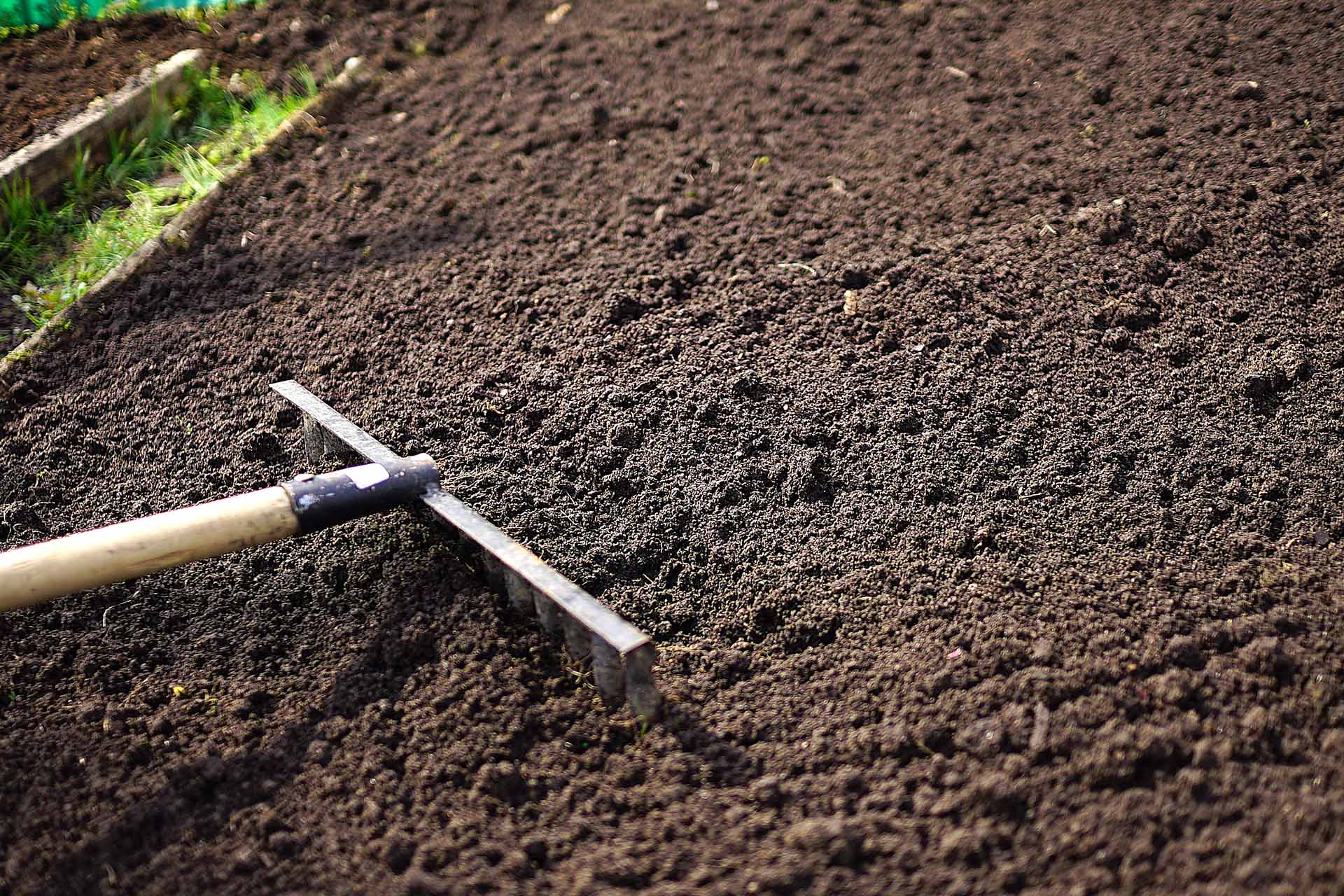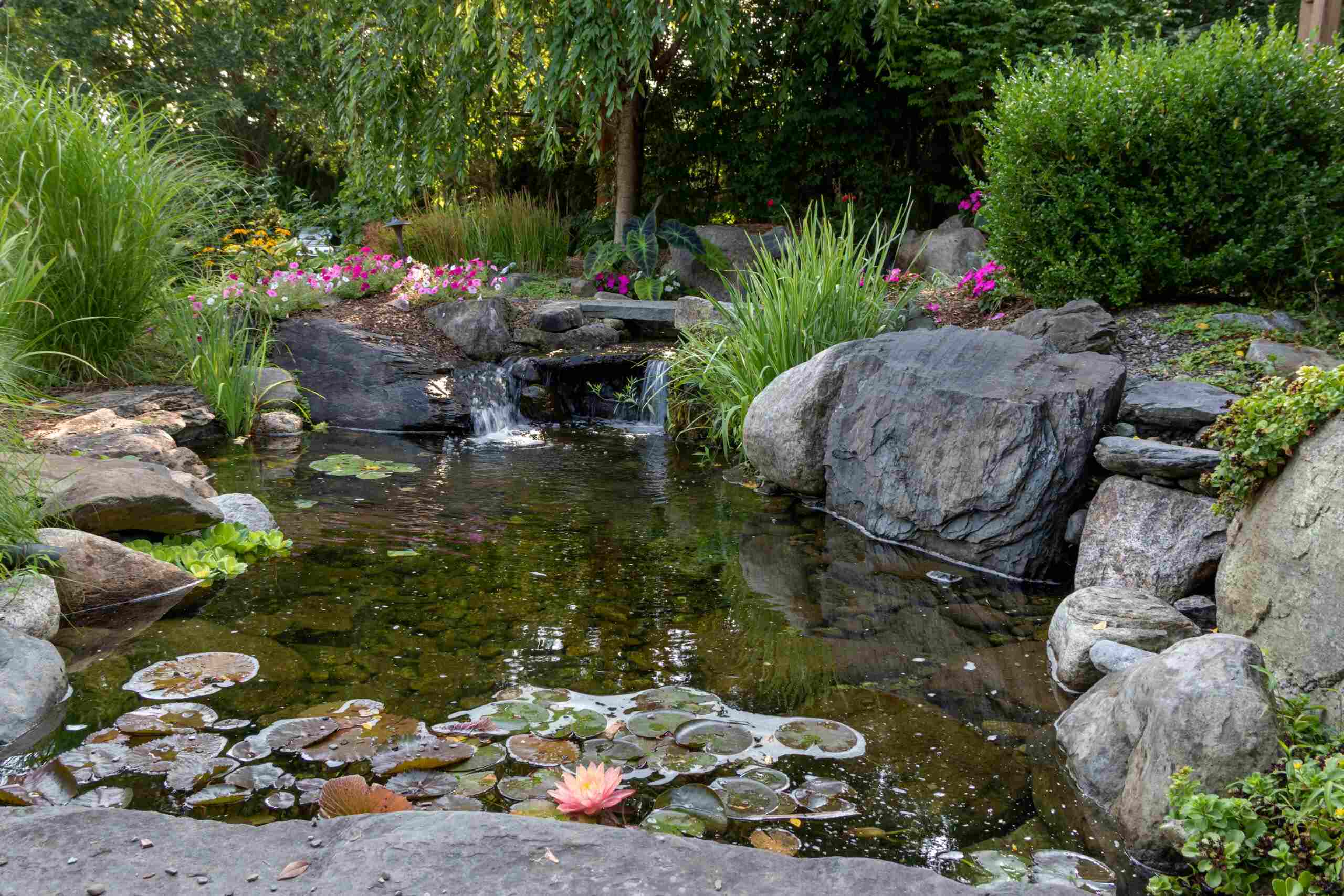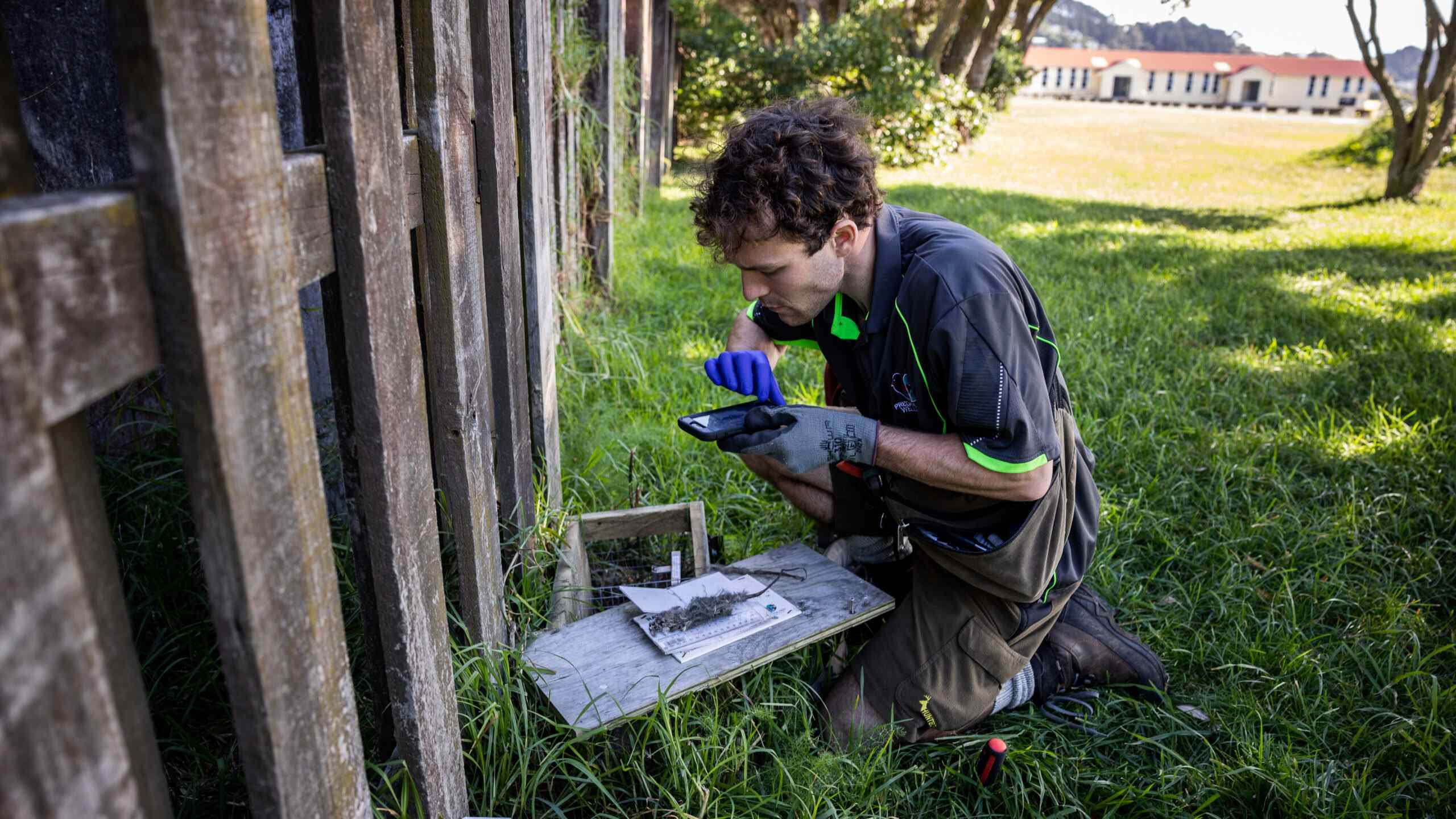Home>Gardening Tips and Tricks>Problem Solving>How To Get Rid Of Gnats In Hydroponics
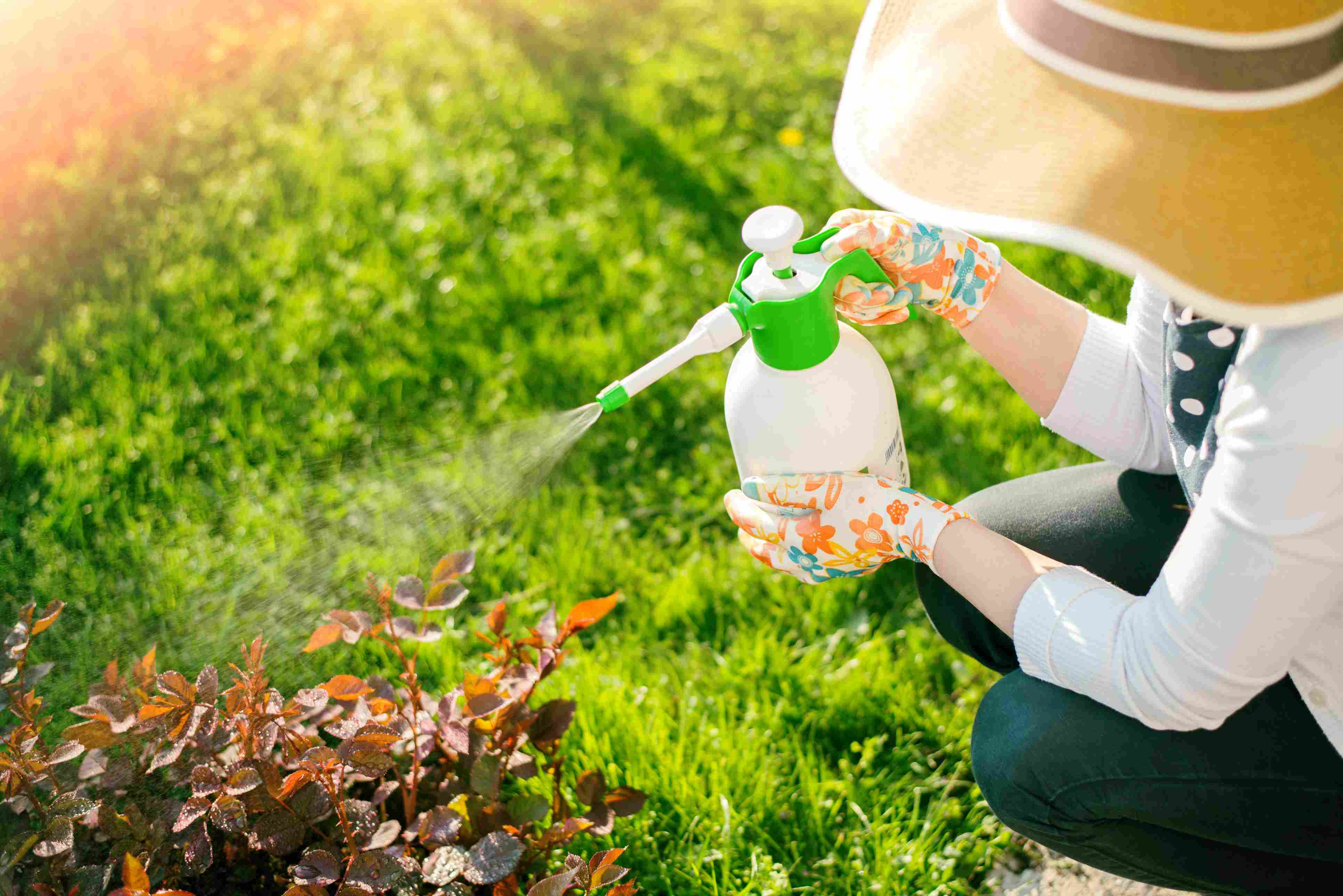

Problem Solving
How To Get Rid Of Gnats In Hydroponics
Published: September 7, 2023
Learn effective ways to solve the problem of gnats in hydroponics with our comprehensive guide. Get rid of pesky gnats and enjoy a thriving hydroponic system.
(Many of the links in this article redirect to a specific reviewed product. Your purchase of these products through affiliate links helps to generate commission for Chicagolandgardening.com, at no extra cost. Learn more)
Table of Contents
Introduction
Gnats are tiny winged insects that can be a nuisance in many settings, and hydroponic systems are no exception. Hydroponics, a method of growing plants without soil, provides a perfect environment for gnats to thrive. These pests not only annoy growers, but they can also cause damage to the plants and disrupt the delicate balance of the hydroponic system.
In this article, we will explore the challenges posed by gnats in hydroponics and discuss effective measures to get rid of them. By understanding the nature of these pests and implementing preventive and eradication strategies, hydroponic growers can maintain healthy and thriving plants.
Gnats in hydroponics are typically of two types: fungus gnats and shore flies. Fungus gnats are attracted to the moist environment of the growing medium and feed on decaying organic matter. Shore flies, on the other hand, are often found in systems with standing water and are attracted to algae and organic debris. Both types of gnats can reproduce rapidly and cause damage to the roots of plants, leading to stunted growth and reduced yields.
The presence of gnats can be detected through the sight of tiny flying insects around the hydroponic system, as well as yellowing or wilting plants. Gnats can also lay eggs in the growing medium, which hatch into larvae that feed on the roots of the plants. If left unchecked, a gnat infestation can quickly escalate and pose a serious threat to the health of the hydroponic garden.
It is important for hydroponic growers to be proactive in preventing and controlling gnats. By implementing a combination of proper sanitation practices, moisture control, trapping methods, beneficial nematodes, and natural insecticides, growers can effectively eliminate gnats and protect their investment in the hydroponic system.
In the following sections, we will delve into each of these prevention and eradication measures in detail, providing step-by-step instructions on how to implement them in your hydroponic system. By following these guidelines, you can ensure that your hydroponic garden remains free from gnats and allows your plants to thrive.
Understanding Gnats in Hydroponics
Before delving into the methods of preventing and eradicating gnats in hydroponics, it is important to understand the behavior and lifecycle of these pests. By gaining insight into their habits, hydroponic growers can develop targeted strategies to effectively control and eliminate gnats from their systems.
Gnats in hydroponics are typically attracted to the moist environment and organic matter present in the growing medium. Fungus gnats, for instance, are commonly found in hydroponic systems that utilize organic materials, such as peat moss or coconut coir, as the growing medium. These gnats are drawn to decaying organic matter, as they lay their eggs in the moist soil and the emerging larvae feed on the decaying material and plant roots.
Shore flies, on the other hand, are often found in hydroponic systems with standing water, such as deep water culture or nutrient film technique setups. These flies are attracted to the algae and organic debris that accumulates in the water, and they lay their eggs in these areas. The larvae that hatch from the eggs feed on the organic matter, disrupting root systems and hindering plant growth.
Gnats reproduce rapidly, with females capable of laying hundreds of eggs in their short lifespan. The eggs hatch into larvae, which then go through several stages of growth before pupating and emerging as adult gnats. The duration of this lifecycle can vary depending on factors such as temperature and humidity, but it generally takes a few weeks for a gnat to complete its development from egg to adult.
Identifying a gnat infestation in a hydroponic system can be relatively easy. Adult gnats are small, usually measuring about one-eighth of an inch in length, and are often observed flying around plants or the surface of the growing medium. The presence of gnats can also be indicated by yellowing or wilting plants, as the larvae feed on the roots and disrupt the plant”s ability to absorb nutrients and water.
Understanding the lifecycle and behavior of gnats is crucial in designing an effective pest management strategy. By targeting the areas and conditions that favor gnat reproduction, hydroponic growers can significantly reduce the population and minimize the damage caused by these pests. In the following sections, we will explore various prevention measures and eradication methods that can be employed to keep gnats at bay in hydroponic systems.
Prevention Measures
Preventing gnat infestations in hydroponic systems is crucial for maintaining the health and productivity of the plants. By implementing the following measures, hydroponic growers can significantly reduce the risk of gnats and ensure a thriving growing environment.
-
Proper Sanitation
One of the most effective ways to prevent gnats in hydroponics is to maintain proper sanitation practices. This includes regularly cleaning and disinfecting the hydroponic system and all related equipment. Remove any decaying plant matter or organic debris from the growing medium, as this serves as a breeding ground for gnats. Additionally, regularly remove fallen leaves or dead plant material from the system to prevent gnats from being attracted to these food sources.
-
Controlling Moisture Levels
Gnats thrive in moist environments, so controlling moisture levels is essential in preventing their infestation. Avoid overwatering your hydroponic system, as excessive moisture can create the perfect habitat for gnats to breed. Allow the growing medium to dry out slightly between waterings, as this will make it less attractive to the pests. Additionally, ensure proper drainage in your system and properly ventilate the grow area to reduce humidity levels.
-
Using Yellow Sticky Traps
Yellow sticky traps can be a valuable tool in capturing and monitoring adult gnats in your hydroponic system. These traps are coated with a sticky substance that attracts the gnats and prevents them from flying away. Place the traps strategically near the plants or the surface of the growing medium to intercept and trap the adult gnats. Regularly check and replace the traps as needed to effectively control the gnat population.
-
Applying Beneficial Nematodes
Beneficial nematodes, such as Steinernema feltiae, can be used as a biological control method to target gnat larvae in the growing medium. These microscopic worms are parasitic to the gnat larvae, infecting and killing them. Dilute the nematodes in water and apply the solution to the growing medium according to the manufacturer”s instructions. Repeat the application at regular intervals to ensure effective control of the gnat larvae.
-
Employing Natural Insecticides
In severe cases of gnat infestations, the use of natural insecticides can be considered as a last resort. Products containing Bacillus thuringiensis var. israelensis (Bti) or Spinosad, derived from the bacteria Saccharopolyspora spinosa, can be effective in controlling gnat larvae. These insecticides are safe to use in hydroponic systems and pose no harm to humans or the environment. Follow the product instructions carefully when applying the insecticide to ensure optimal results.
By implementing proper sanitation practices, controlling moisture levels, using yellow sticky traps, applying beneficial nematodes, and employing natural insecticides, hydroponic growers can greatly reduce the risk of gnat infestations. Prevention is key in maintaining a healthy and thriving hydroponic system, ensuring the success of your plants.
Proper Sanitation
Proper sanitation is an essential step in preventing gnats in hydroponics. By maintaining a clean and hygienic environment, hydroponic growers can minimize the risk of gnat infestations and ensure the health and productivity of their plants.
One of the key aspects of proper sanitation is regularly cleaning and disinfecting the hydroponic system and all associated equipment. Start by emptying and cleaning the reservoir, removing any remaining water and debris. Use a mild detergent or hydrogen peroxide solution to scrub the reservoir, making sure to remove any organic matter or algae that may have accumulated. Rinse thoroughly to remove any cleaning residue.
Next, clean the growing medium. Remove any decaying plant matter or roots that may serve as a food source for gnats. Inspect the growing medium carefully, paying attention to any signs of mold or fungus growth, as these can attract gnats. Replace the growing medium if necessary to eliminate potential breeding sites for the pests.
It is also important to regularly remove fallen leaves or dead plant material from the system. These organic materials can attract gnats and provide them with a food source. Regularly inspect the plants and remove any damaged or dying leaves promptly.
In addition to regular cleaning, it is recommended to disinfect the hydroponic system on a periodic basis. This can be done by using a mild bleach solution or a hydrogen peroxide and water mixture. Follow the manufacturer’s instructions for dilution ratios and contact time. Disinfecting the system will help kill any remaining pathogens or pests, reducing the risk of gnat infestations.
Proper sanitation practices also extend to maintaining a clean and organized grow area. Sweep or vacuum the floor regularly to remove any fallen leaves or organic debris. Keep the area free from clutter and ensure proper ventilation to reduce humidity levels, as excessive humidity can create an ideal environment for gnats to thrive.
By practicing proper sanitation measures, hydroponic growers can significantly reduce the risk of gnats in their systems. Regular cleaning and disinfection, along with proper management of organic matter and debris, create an inhospitable environment for gnats and other pests. By taking these preventive measures, growers can ensure that their hydroponic gardens remain healthy and free from gnat infestations.
Controlling Moisture Levels
Controlling moisture levels in a hydroponic system is crucial in preventing gnat infestations. Gnats thrive in moist environments, and by carefully managing the moisture levels, hydroponic growers can effectively reduce the risk of gnat breeding and the subsequent damage they can cause to plants.
One key aspect of moisture control is avoiding overwatering. While it is important to provide plants with the appropriate amount of water, excessive moisture can create an ideal environment for gnats to reproduce. Overwatering can saturate the growing medium, making it consistently wet and attractive to gnats as a breeding ground.
Instead, aim for a balance by allowing the growing medium to dry out slightly between waterings. Monitor the moisture levels in the system regularly, and only add water when necessary. Be cautious not to let the roots sit in water for prolonged periods, as this can lead to root rot and create a hospitable environment for gnats.
Proper drainage is also crucial in moisture control. Ensure that your hydroponic system has adequate drainage to allow excess water to flow out properly. Properly designed systems, such as those with drain holes or trays, can help prevent water from pooling and becoming stagnant, which can attract gnats.
Proper ventilation is another important factor in controlling moisture levels. Good airflow is essential for preventing excess humidity, which can encourage gnat reproduction. Make sure that your grow area is adequately ventilated, with fans or vents to circulate air. This will help maintain proper humidity levels and discourage gnats from settling in the hydroponic system.
In addition to moisture levels within the system, it is important to consider the humidity of the surrounding environment. If your grow area is naturally humid, consider using a dehumidifier to maintain optimal humidity levels. By reducing overall humidity, you create an environment that is less favorable for gnats to thrive.
Regularly monitoring and adjusting moisture levels in your hydroponic system is key to preventing and managing gnat infestations. By avoiding overwatering, ensuring proper drainage, maintaining good ventilation, and managing external humidity, hydroponic growers can create an unfavorable environment for gnats and maintain a healthy and productive garden.
Using Yellow Sticky Traps
Yellow sticky traps can be a highly effective tool in controlling and monitoring gnats in hydroponic systems. These traps are coated with a sticky substance that attracts and captures adult gnats, preventing them from flying away and continuing their lifecycle.
The bright yellow color of the traps mimics the hues of flowers or ripe fruit, which naturally attracts gnats. Once the gnats land on the sticky surface, they become trapped and unable to escape. This not only helps reduce the gnat population but also serves as a useful monitoring tool to gauge the severity of the infestation.
To use yellow sticky traps effectively, strategically place them around the grow area, especially near the plants or the surface of the growing medium. Hang the traps at the same height as the plant foliage to intercept flying gnats and prevent them from reaching the plants.
It’s important to regularly check and replace the traps as needed. Depending on the severity of the infestation, the traps can quickly become covered with captured gnats or other insects. Replace them once they are full or when they become less sticky due to dust or debris. Maintaining clean and effective traps maximizes their efficiency in trapping and controlling gnats.
Using multiple traps throughout the grow area can provide better coverage and increase the chances of capturing gnats. Place traps near entrances, windows, or other areas where gnats may enter the growing space. By creating a barrier of yellow sticky traps, you can intercept and trap gnats before they reach your plants.
While yellow sticky traps are effective for capturing adult gnats, keep in mind that they are not as effective in controlling the larvae or eggs. Therefore, it’s important to combine the use of sticky traps with other prevention and eradication methods to address all stages of the gnat lifecycle.
Yellow sticky traps are a non-toxic, chemical-free method of gnat control that is safe to use in hydroponic systems. They offer a cost-effective and environmentally friendly way to reduce the gnat population and protect your plants from damage. Incorporating yellow sticky traps into your integrated pest management strategy can significantly improve the overall effectiveness of gnat control in your hydroponic garden.
Applying Beneficial Nematodes
Beneficial nematodes, specifically Steinernema feltiae, can be a highly effective biological control method for targeting gnat larvae in hydroponic systems. These microscopic worms are parasitic to the gnat larvae, infecting and ultimately killing them. Using beneficial nematodes can help break the gnat lifecycle and prevent further infestations.
When applying beneficial nematodes, it is important to follow the manufacturer’s instructions carefully. Nematodes are shipped as a concentrated solution and need to be diluted in water before application. Use a sprayer or watering can to apply the nematode solution to the growing medium, ensuring thorough coverage.
It is crucial to apply the nematodes when the gnat larvae are actively feeding. This typically occurs during times of high moisture, such as after watering or when the lights are on. Timing is key to maximize the effectiveness of the nematodes as they depend on the presence of gnat larvae to complete their lifecycle.
Beneficial nematodes work by entering the gnat larvae through natural body openings, releasing bacteria that quickly kill the larvae. Once inside, the nematode reproduces and develops, eventually emerging as an infective juvenile that seeks out new gnat larvae to infect. This life cycle continues, reducing the number of gnat larvae in the growing medium.
To ensure optimal results, it is recommended to apply beneficial nematodes at regular intervals, especially during periods of high gnat activity. This can help maintain control over the population and prevent the larvae from causing further damage to the plant’s roots.
It is important to note that beneficial nematodes are sensitive to temperature and can have limited effectiveness under extreme temperatures. Optimal temperature ranges for the nematodes are typically between 60°F (15°C) and 85°F (29°C). Avoid applying nematodes when the temperature is outside of this range, as they are less likely to survive and reproduce.
Using beneficial nematodes provides a natural and environmentally friendly approach to controlling gnat larvae in hydroponic systems. They are safe to use around plants, humans, and beneficial insects, making them an ideal choice for integrated pest management. By incorporating beneficial nematodes into your gnat control strategy, you can effectively target the larvae and reduce the overall gnat population in your hydroponic garden.
Employing Natural Insecticides
In severe cases of gnat infestations, the use of natural insecticides can be considered as a last resort. Natural insecticides derived from Bacillus thuringiensis var. israelensis (Bti) or Spinosad can be effective in controlling gnat larvae in hydroponic systems while being safe to use around plants and humans.
Bti, a bacterium found in soil, produces toxins that specifically target and kill gnat larvae when ingested. Bti-based insecticides are available in liquid or granular form, and they can be applied to the growing medium according to the manufacturer’s instructions. These products are safe for use in hydroponic systems and do not pose an environmental risk.
Spinosad, derived from the bacteria Saccharopolyspora spinosa, is another natural insecticide that can be used to control gnat larvae. It acts by affecting the nervous system of the larvae, ultimately leading to their death. Spinosad-based products are available as sprays or powders and can be applied to the growing medium as directed by the product label.
When using natural insecticides, it is important to carefully follow the instructions provided by the manufacturer. Different products may have varying application rates and methods, so it is essential to adhere to the specific recommendations for optimal effectiveness.
Before resorting to the use of natural insecticides, it is recommended to exhaust other prevention and control measures. These insecticides should be used as a last resort, primarily when other methods have proven ineffective in managing the gnat population.
While natural insecticides can be effective, it is important to note that they may also affect beneficial insects. These insecticides are not selective and can harm beneficial insects, such as ladybugs or predatory mites, which may be present in the hydroponic system. Consider the potential impact on beneficial insects before using natural insecticides, and use them sparingly and only when necessary.
Additionally, it is crucial to carefully monitor and follow the recommended application intervals to ensure continuous control of gnat larvae. Regular inspections of the growing medium and plants can help identify any resurgence of gnat activity and prompt reapplication if needed.
By employing natural insecticides, hydroponic growers can effectively control and manage gnat larvae in their systems while minimizing the impact on the environment and beneficial insects. Remember to use these insecticides responsibly and as a last resort, following the instructions provided by the manufacturer for optimum results.
Eradicating Gnats in Hydroponics
Eradicating gnats in hydroponics requires a combination of prevention measures and targeted control methods. By implementing a comprehensive approach, hydroponic growers can effectively eliminate gnats from their systems and ensure the health and productivity of their plants.
First and foremost, it is crucial to identify and address the root cause of the gnat infestation. Assess the growing medium and surrounding environment for any sources of organic matter or standing water that may be attracting gnats. Remove or replace any contaminated growing medium and address the underlying issue to prevent future infestations.
Implementing proper sanitation practices is key in eradicating and preventing gnats. Regularly clean and disinfect the hydroponic system, removing any decaying organic matter and debris. Ensure that fallen leaves and dead plant material are promptly removed from the grow area. This will eliminate potential food sources for gnats and disrupt their breeding cycle.
Controlling moisture levels is essential in eradicating gnats. Avoid overwatering, allowing the growing medium to dry out slightly between waterings. Additionally, ensure proper drainage in the hydroponic system to prevent the accumulation of stagnant water. By reducing excess moisture, you create an inhospitable environment for gnats and disrupt their lifecycle.
Utilizing yellow sticky traps can be highly effective in trapping adult gnats and reducing their population. Place the traps strategically throughout the grow area, near plants or the surface of the growing medium. Regularly check and replace the traps as needed to maintain their effectiveness.
If the infestation persists, beneficial nematodes can be applied to target and control gnat larvae. Dilute the nematodes in water according to the manufacturer’s instructions and apply the solution to the growing medium. The nematodes will infect and kill the larvae, breaking the gnat lifecycle and reducing the overall population.
In severe cases of gnat infestations, natural insecticides derived from Bti or Spinosad can be used as a last resort. These insecticides specifically target gnat larvae while being safe for use in hydroponic systems. Follow the manufacturer’s instructions carefully when applying these products and consider their impact on beneficial insects.
Continuous monitoring and regular inspections are critical in eradicating gnats. Regularly inspect the growing medium and plants for any signs of gnat activity. Be proactive in addressing any resurgence of the infestation by implementing the appropriate control measures promptly.
By diligently implementing prevention measures, utilizing targeted control methods, and closely monitoring the hydroponic system, growers can eradicate gnats and create a pest-free environment for their plants to thrive.
Conclusion
Gnats can pose a significant challenge in hydroponic systems, but with the right prevention measures and control methods, these pests can be effectively managed and eliminated. By understanding their behavior and lifecycle, hydroponic growers can implement targeted strategies to prevent gnats from infesting their systems and causing damage to their plants.
Proper sanitation and cleanliness are crucial in preventing gnat infestations. Regularly clean and disinfect the hydroponic system and associated equipment to remove any decaying organic matter that may attract gnats. Maintaining proper moisture levels and implementing drainage measures can also discourage gnat breeding, as these pests thrive in moist environments.
Using yellow sticky traps can provide an effective way to capture and monitor adult gnats in the grow area. These traps intercept and trap flying gnats, reducing their population and preventing them from reaching the plants. Beneficial nematodes are another valuable tool in controlling gnat larvae. By applying these microscopic worms, growers can target and eliminate the source of the infestation.
In severe cases, natural insecticides derived from Bti or Spinosad can be used as a last resort. These insecticides specifically target gnat larvae while being safe to use in hydroponic systems. However, it’s important to consider their impact on beneficial insects and use them sparingly and responsibly.
Regular monitoring, inspections, and prompt action are essential in eradicating gnats. By staying vigilant and addressing any signs of gnat activity promptly, growers can prevent infestations from resurging and ensure a pest-free environment for their plants.
By implementing these prevention measures and control methods, hydroponic growers can successfully eliminate gnats from their systems and maintain healthy, productive plants. Remember, prevention is key. Incorporate these strategies into your regular maintenance routine to minimize the risk of gnat infestations and optimize the success of your hydroponic garden.
